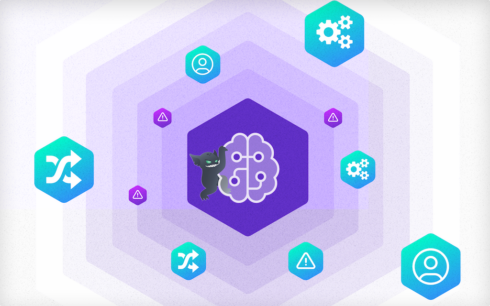
We’ve all witnessed the AI boom over the past few years, but these seismic tech shifts don’t just materialize out of thin air. As companies rush to deploy AI models and AI-powered apps, we’re seeing a parallel surge in complexity. That growth is a threat to your system’s uptime and availability.
It boils down to the sheer volume of interconnected components and dependencies. Each one introduces a new failure point that demands rigorous validation. This is exacerbated when, at the same time, AI is accelerating deployment velocities.
This is why Chaos Engineering has never been more critical. And not as a sporadic check-the-box activity, but as a core, organization-wide discipline. Fault Injection via Chaos Engineering is the proven method to uncover failure modes lurking between services and apps. Integrate it into your testing regimen to plug those holes before they trigger expensive incidents.
Chaos Engineering Was Born in a Tech Explosion
Those of us who’ve been around a while remember another massive tech shift: the cloud. It was a game-changer, but it brought its own headaches. Trading control for speed of execution, engineers now had to design for servers disappearing, everything being a network dependency and a new set of failure modes.
That’s exactly where Chaos Engineering got its start. Back at Netflix, amid the rush to migrate to the cloud, Chaos Monkey was created to force engineers to confront those realities head-on. It wasn’t about causing random havoc; it was a deliberate way to simulate host failures and train teams to design for resilience in a world where infrastructure is ephemeral.
Don’t get me wrong, Chaos Engineering has evolved far beyond just shutting down servers. Today, it’s a precise toolkit for injecting faults like network blackholes, spikes in latency, resource exhaustion, node failures and every other nasty interaction that can derail distributed systems.
And that’s a damn good thing, because the AI boom is cranking up the stakes. As companies race to roll out AI models and apps, they’re exploding their architectures with more dependencies and faster deployments—multiplying reliability risks. Without proactive testing, those gaps turn into outages that hit hard.
AI Architectures Are Riddled with Failure Points
Don’t get me wrong, modern apps are already a minefield of potential failure modes, even without AI thrown into the mix. In an era where it’s common to see setups with hundreds of Kubernetes services, the opportunities for things to go sideways are endless.
But AI cranks that up to eleven, ballooning deployment scale and demands. Consider an app integrating with a commercial LLM through an API. Even if you keep your core architecture the same, you’re adding in a plethora of network calls, i.e. dependencies. Each of which can fail, or slow down dramatically resulting in a poor end-user experience.
Host your own model, and you’ve got the added headache of maintaining response quality. Even Anthropic found that out recently when load balancer issues led to low quality Claude responses.
I’m not here to throw shade. These gotchas are easy to overlook when you’re pushing the state of the art. That’s exactly why you need a “trust, but verify” ethos. Chaos Engineering is the tool to make it real, uncovering vulnerabilities before they turn into disasters.
AI Reliability Demands Standardized Chaos Engineering
Unveiling a slick new chatbot or AI-driven analytics tool is the fun part. Keeping it humming along? That’s the grind.
The truth is, if you nail the unglamorous stuff, you unlock bandwidth for the innovative work that fires up engineers and drives business forward. Most teams don’t budget for failures in their product roadmaps, so these events detract from delivery timelines.
Take a recent case with one of our big telecom clients: they crunched the numbers on services embracing solid Chaos Engineering versus those skating by without. The Gremlin-powered ones? Way fewer pages, rock-solid uptime. Engineers spent less time firefighting and more time shipping killer features.
So, how do we apply this to AI stacks?
Get systematic: zero in on high-stakes failures and scale the practice org-wide.
Dive in with experiments, even if you feel underprepared. Maturity builds through doing. Target key spots—like your LLM API endpoint—and probe how your app handles outages or latency spikes.
Curate a library of standard attacks. Tools like Gremlin offer ready-made scenarios to kickstart, but the real win is consistency: shared standards that lighten the load for teams and amplify impact.
Make it routine.. Schedule regular tests to spotlight evolving risks before they escalate to incidents. Layer in metrics and ownership. Create a reliability scorecard, tracking trends. Highlight wins and hold teams accountable when issues arise. Loop in execs not just for visibility, but to drive cross-company improvements.
This isn’t finger-pointing; it’s about rallying when resilience wobbles. If Chaos Engineering’s been on your back burner, the AI surge is your cue to turn up the heat. The tech world’s shifting fast, and reliability must keep pace. That way, when users hit your AI feature, it’s up and delivering results they can count on.






